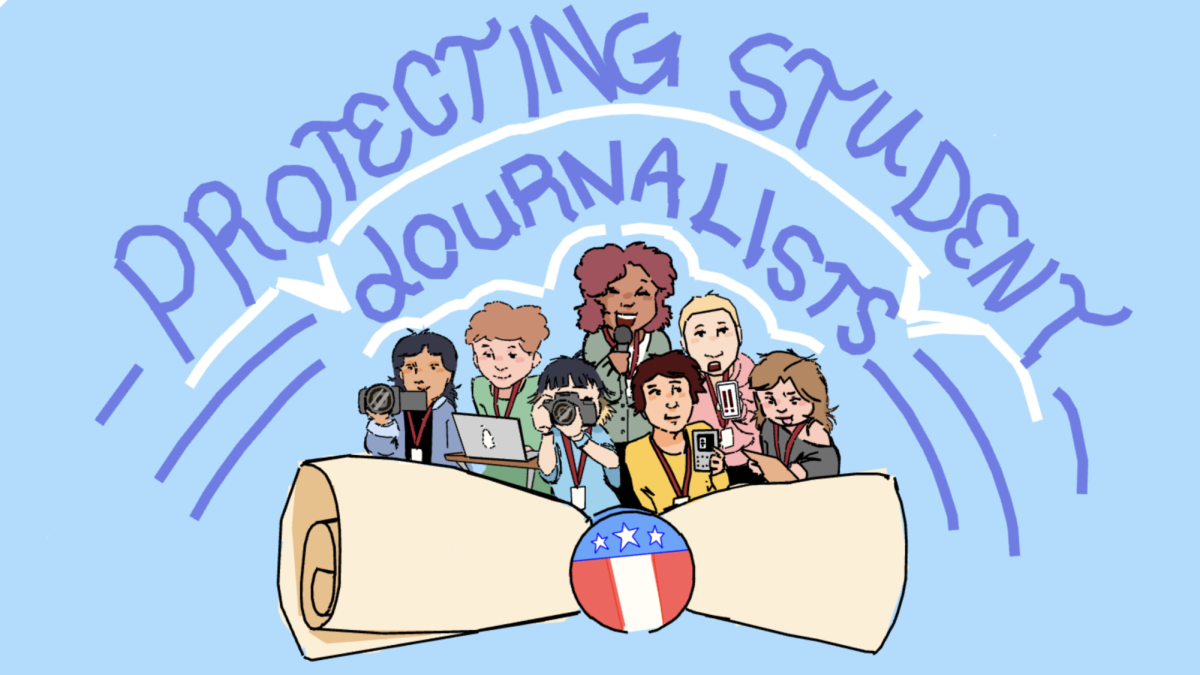Senior year is often portrayed as the light at the end of the tunnel. Throughout high school, a majority of seniors enjoy telling underclassmen how easy and fun senior year will be for them. However, they tend to leave out one simple thing: the easy part does not occur until the second semester.
What the past seniors tend to neglect is the struggle of college applications, FAFSA and signing up for scholarships and sending transcripts. A common misconception most students said they had going into senior year was that it would be easy. In an online poll taken by The Eagle Eye, 61 percent of seniors reported that senior year is harder than they expected. Many of those students feel this way because they take honors and AP classes in order to create the competitive senior schedules most colleges look for as a major factor in admission.
These competitive senior schedules schools often leave students with rigorous course work, for some on par with or exceeding the difficulty of their junior year. This also ties into the senior specific courses that students want to take like Astronomy or Advanced Placement Government.
Underclassmen are not informed that although the senior specific AP courses are some of the easier AP’s offered, they still require substantial time commitments, especially AP Government, where a large percentage of your grade comes from tests. The presence of fluff grades, or easy assignments that everyone does well on to increase average grades, are less frequent than in earlier years of high school, making test grades even more important to your overall grade.
Another common misconception is the easy and breezy, beautiful college application process. Students are often lead to believe that college applications require just clicking a few buttons, filling in their address and then boom in a couple of weeks or months they find whether or not they were accepted to their dream school. However, the process is usually much more difficult, with colleges even putting out checklists so students can make sure they get all the different relevant forms and information submitted to the college on time for admissions decisions.
Students need to fill out the application itself, most involving an SSAR, in which students are required to self-report all the marking period grades they ever received in high school into a form, and then pay for that application additionally. If they cannot afford to pay the application fee, then they must fill out more forms in order to qualify for a free application. After filling out the application, which can take anywhere from five minutes to two hours, students must then send in their ACT and SAT scores if needed and the same goes with their transcripts. Students may also be asked write the dreaded college essay, which is not too long, usually under 2,500 characters, but gives students an opportunity to really showcase who they are as a person.
Students may also need to apply for scholarships, which is an additional source of stress. Most scholarships require filling out FAFSA, which determines if you are eligible for federal financial aid and heavily influences colleges decisions for financial aid. The FAFSA itself requires a lot of information and may take a while to complete. Scholarships themselves can be as easy as your name and email or may require multiple recommendation letters and essays in order to apply.
According to the results from a recent multi-year College and Career Readiness survey of 165,000 high school students conducted by YouthTruth, a San Francisco-based nonprofit, 45 percent of students feel positive about their college and career readiness, leaving the other 55 percent of students feeling worried.
Senior year is portrayed by many as the “best part of high school” and in popular culture hyped up to the point where if you’re at home on a Friday night doing homework you’re “wasting your senior year.” The novel about senior year we are all fed throughout high school is just that, a novel. Work and responsibility don’t end once senior year starts, but instead accelerates as the transition to college begins. The beginning of senior year for many college bound students is less of a new year and more of an extension of junior year.










